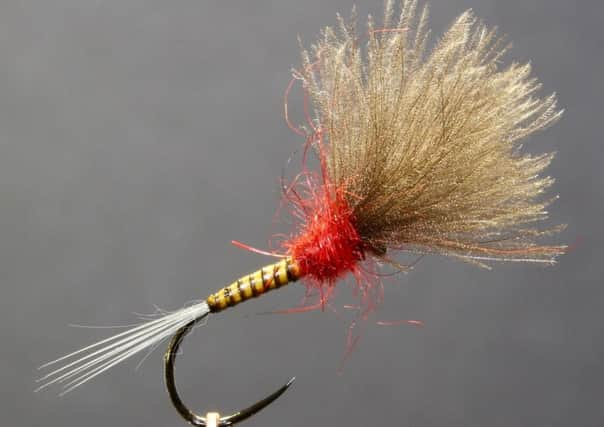There's a lot of fluff


Before your mind embarks upon some flight of fancy and our dear readers desert us in droves, I refer to the down dispersed over the distal district of a duck.
Referred to by fly tiers as ‘cul de canard’ (commonly known as CDC), I have mentioned it on several occasions. Sprouting in a cluster around the preen gland, CDC consists of very fine, grey feathers that are impregnated with a natural oil that ducks wipe on their feathers as a raincoat. Incorporated into an artificial, it furnishes said fly with unparalleled flotation.
Advertisement
Hide AdAdvertisement
Hide AdA fat, winter stubble fed mallard provides a meal that would grace any Christmas table; a far cry from a flabby farm yard imposter. I harvest them whenever the opportunity arises, usually carrying a couple of 35mm film cases in my pocket for storage, though these are becoming much sought after in these times of digital photography.
Now, without wishing to be indelicate, the nether regions of a duck are susceptible to, shall we say, “contamination”? So, upon returning to headquarters, I tip the CDC in the sink, add a little cool water and gently agitate the mixture with a wooden spoon. Management has decreed that I have my own special spoon, clearly marked with DP on the handle, (answers on a postcard) which is stored separately from the ones used to stir the Christmas pudding.
The result is a kind of robust broth, CDC floating like croutons on the surface, whilst the ‘contamination’ lurks at the bottom of the sink. The CDC can now be carefully scooped out with a sieve, the one used for sifting flour is perfect.
Then comes the job of ‘decontaminating’ the sink, under close scrutiny of management; the stuff that “kills all known germs” is just the job. Tip the soggy feathers on to a sheet of newspaper, pop it in the airing cupboard to dry for a couple of days.
Advertisement
Hide AdAdvertisement
Hide AdI store my prepared CDC in one of those plastic tubs with a snap-on lid, transfer from newspaper to pot is tricky; make sure that your draught proofing is sound and avoid heavy breathing. Even the slightest waft of breeze will distribute the fluff throughout the available space.
When incorporating CDC into the dressing of a fly I have my tub on my desk before me. It is advisable to wear a surgical mask. Yes, I know that may seem a bit extreme, but be warned; one vigorous sneeze will redistribute the famous feathers in a most spectacular way.
FOR SANTA
If you have a look at the fly that Steve has tied, you will understand why we have named it ‘Santa’s Shuttlecock’, the fluffy bit sticking out of the end of the fly is the CDC.
The white tails at the rear end are fashioned from a couple of curls from Santa’s beard. I could write a whole column on the perils of collecting the latter material, sufficient to say I have been ejected from a couple of department stores!